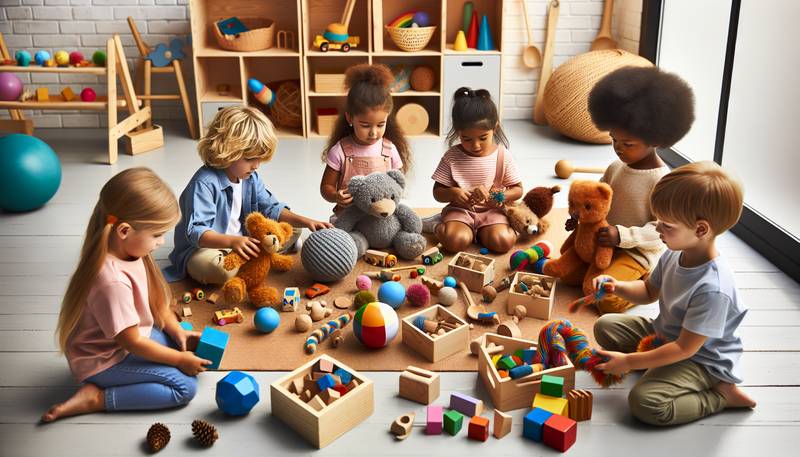The Unmitigated Importance of Tactile Play in Children's Development

Why Children Aren’t Just Tiny AdultsWhen it comes to the growth of a child, one might think they’re simply miniature versions of grown-ups, waiting for the day when they can finally sit through a three-hour meeting without doodling. But let’s face it, kids are like little tornadoes, swirling through life with curious minds and sticky fingers. One crucial aspect of their development is tactile play, which can—believe it or not—be as essential as nap time (and we know how crucial that is).Tactile play is the stuff of imaginations, a world where mud pies are delectable delicacies, and sandcastles are architectural marvels. This form of play engages children's senses and promotes cognitive, social, and emotional growth faster than a toddler can say “Oops!” (and trust me, they can say it quite quickly).The Sensory SoireeEngaging with different textures is like hosting a sensory party that even the grumpiest of cats would attend. Kids experience various materials—smooth, rough, squishy, or prickly—and their brains are lighting up like a Christmas tree. This sensory buffet not only serves up delightful experiences but also helps with fine motor skills. Imagine a child learning to grasp a crayon; it’s like watching a mini Picasso evolve into a master artist! A few key benefits of tactile play include: - Fine Motor Development: Those tiny fingers need something to do other than pointing out the last cookie in the jar.
- Cognitive Skills: Children are natural scientists, experimenting with what happens when you mix sand, water, and a bit of imagination.
- Emotional Regulation: Nothing like a good pile of playdough to squeeze out frustrations—like when the Wi-Fi goes down.
Why Messy Play is the Best PlayIf there’s one universal truth about kids, it’s that they love getting messy. You might find yourself pulling on a pair of gloves, trying to clean up what appears to be the aftermath of a food fight with spaghetti. But let’s not despair! Messy play is where the magic happens. Let them dive into a world of mud, finger paint, or even pancake batter (yes, it’s a thing!). Each texture kids encounter helps them process different sensations, making sense of their world one gooey handful at a time. Bonus points if they can get half of it on the wall instead of their clothes. Beyond the mess, this type of engagement builds creativity, problem-solving skills, and resilience. When a child builds a tower with blocks that inevitably tumbles down, they learn that the world doesn’t end with the collapse of their cardboard castle—there’s always more cardboard. The Social Skills SuperhighwaySure, kids can be surprisingly generous when it comes to sharing toys, but nothing brings out their social skills like tactile play. Picture a group of kids gathered around a giant pile of colorful playdough, working together to create an intricate masterpiece of a worm with three eyes. Collaboration? Check. Communication? Double-check. Diplomatic negotiations over who gets to use the glitter? Triple-check! Through tactile play, children get to express their unique viewpoints while navigating the tricky waters of teamwork and negotiation. And let’s not forget those delightful moments when a child realizes that, yes, sharing the last piece of glitter can lead to a glorious explosion of creativity.Growing Up Through PlayIn an age where screens reign supreme, it’s essential to remember that tactile play isn’t just an amusing pastime. It’s a vital building block for holistic child development. Children who engage with their environment through tactile means develop a better understanding of their bodies, improve their cognitive abilities, and learn how to communicate with others.Whether they’re mixing colors, building castles, or simply getting the dog involved in a mud bath, these interactions contribute to a well-rounded, confident individual who knows that life is about experiencing different textures—both literally and metaphorically. Wrapping It Up Without a BowTo say tactile play is important is like saying kids get a little silly when it comes to dessert—an understatement! Engaging in tactile experiences fosters growth, creativity, and a sense of collaboration. Plus, it provides endless opportunities for laughter, joy, and the occasional clean-up battle. So if you ever find yourself knee-deep in finger paint or trying to salvage a half-eaten mud pie, just remember: you’re not just witnessing play—you're witnessing the quintessential chaos of childhood development. And that, my friend, is a masterpiece worth celebrating!
|
|







